During a presentation on current transformers yesterday, something came up that I really didn't start considering until today. The presenter said one of the biggest issues with using smaller ratio current transformers (i.e. 200:5, 600:5) is they would have to be physically larger than a larger ratio current transformer (2000:5). Is this always true? I'm trying to understand why this is. Could someone help me conceptualize why the smaller the ratio's get on a CT, the physically larger they become.
Why are smaller ratio current transformers physically larger than bigger ratio current transformers?
-
Did the presenter show any real examples? – winny Dec 14 '22 at 12:51
-
@winny They did not. He phrased it like a question. Paraphrasing but, "so in order to get a 200:5 instead of a 2000:5 what needs to happen? The CT will need to be larger." Perhaps I missed something that was specific to this example, but to me it sounded like he was stating it as a rule of thumb. – Justin Montego Dec 14 '22 at 12:58
1 Answers
Let's say you have a 10 Ω burden resistor connected to the secondary of a CT that has a single primary turn (normal) and 40 secondary turns. That's equivalent to your 200:5 transformer; the primary has 5 turns and the secondary as 200 turns or, the primary has a single turn and the secondary has 40 turns.
OK so far?
Due to transformer action, the burden (10 Ω) is transformed to the primary-side by the inverse of the turns ratio squared. So, the primary will look like a resistive impedance of: -
$$\dfrac{10\text{ }\Omega}{40^2} \hspace{1cm}=\hspace{1cm} 6.25 \text{ m}\Omega$$
This will be in parallel with the CT's primary magnetization inductance.
OK so far?
If the primary's magnetization inductance is 10 μH, its impedance (at say 50 Hz) is 3.14 mΩ: -
$$X_L = 2\pi f L \hspace{1cm}=\hspace{1cm} 314\times 10\times 10^{-6}\text{ }\Omega\hspace{1cm}=\hspace{1cm} 0.00314\text{ }\Omega$$
And, this is a certain problem; the magnetization reactance/impedance has to be massively bigger than the reflected impedance of the burden at the primary else, it'll be a very poor CT and might even go into magnetic saturation at high currents. This is what you want at the primary: -

simulate this circuit – Schematic created using CircuitLab
There are two ways to fix this: -
- Choose a core that is much bigger so that the magnetization inductance is much bigger
- Choose a turns ratio that is much bigger so that the reflected burden resistance at the primary is much smaller and is therefore the dominant impedance in which primary current travels.
- Choose a lower value burden resistor (this may also become a problem due to secondary winding resistance)
You want the primary magnetization inductive reactance to be much, much bigger than the reflected burden resistance or your accuracy will be pants.
- 434,556
- 28
- 351
- 777
-
Wow, awesome answer. This makes total sense. By any chance, could you show me the equation or formula you used to get the 3.14 mΩ from the primary magnetization inductance. Thank you for the answer. – Justin Montego Dec 14 '22 at 13:26
-
1@JustinMontego that's the impedance of the inductance @ 50Hz: \$ Z(L) = 2\pi Lf \$ – Rahmany Dec 14 '22 at 13:39